Meet Senator Patricia Bovey
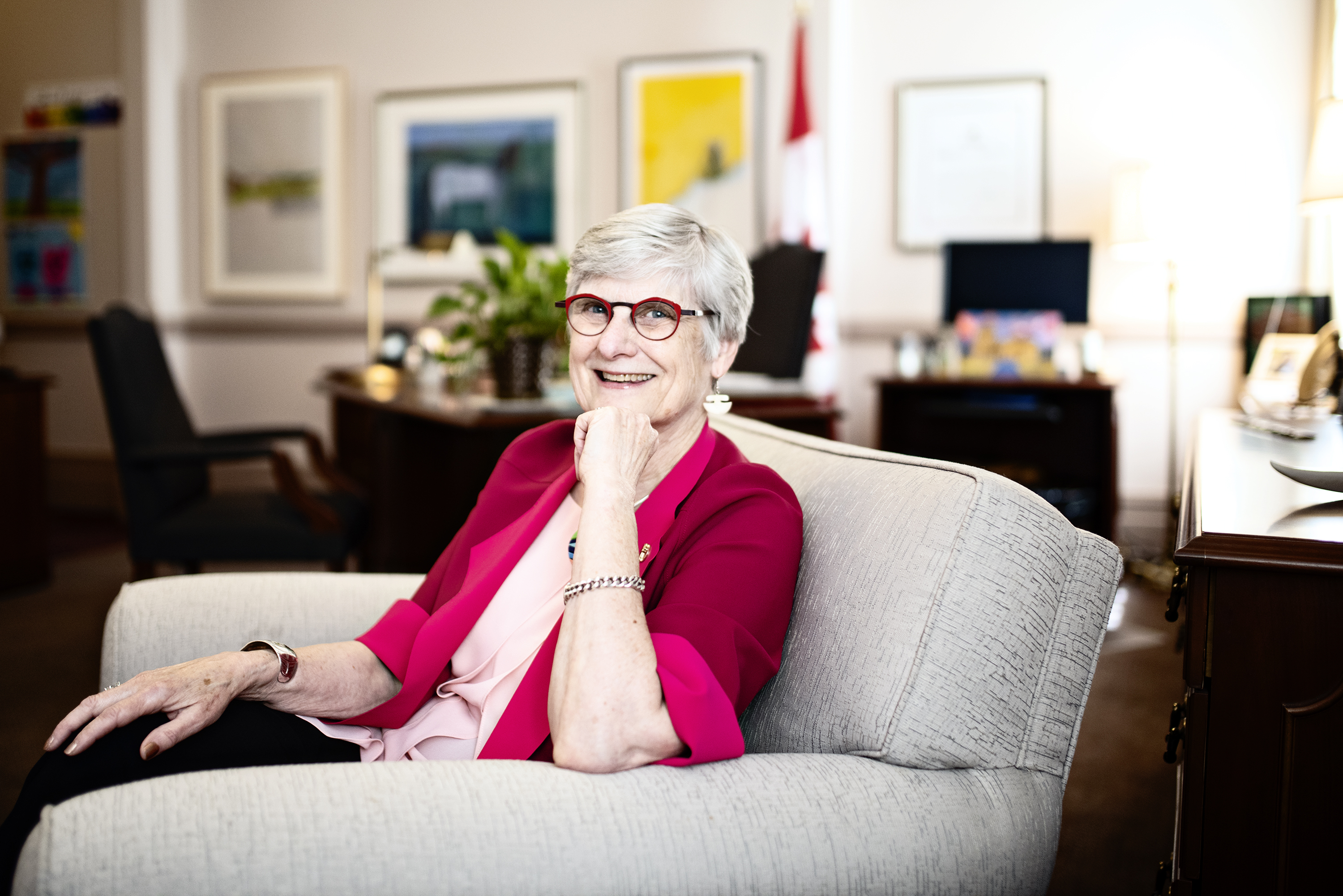
Before being appointed to the Senate on November 10, 2016, Senator Patricia Bovey was a Winnipeg-based gallery director and curator, art historian, writer, professor and, for many years, a management consultant in the arts and not-for-profit sector.
She is currently deputy chair of the Senate Committee on the Arctic and is a member of the Senate Committee on Foreign Affairs and International Trade. A passionate defender and promoter of Canadian art, she brings an arts and culture lens to her work in the Red Chamber.
How did you first get involved in public life?
My parents were very involved in public life and strengthening one’s community. Being involved in one’s community was part of the mantra of our home. So, as children we volunteered and that involvement is just part of who I am and what I’ve done my whole life.
Before I came to the Senate, I worked in the visual arts as a curator and art museum director for many decades and I taught at several universities. I was adjunct professor in public administration and in art history and arts management. In the volunteer sector, among other commitments, I chaired two university boards — the board of Emily Carr University and that of the University of Manitoba.
As an art gallery director, my role was to present artists’ depictions of social issues and of the world around us both at home and abroad, and to do so from multiple viewpoints and to multiple audiences.
In the Senate, we also deal with contemporary issues affecting the world around us, again from multiple viewpoints and to multiple audiences.
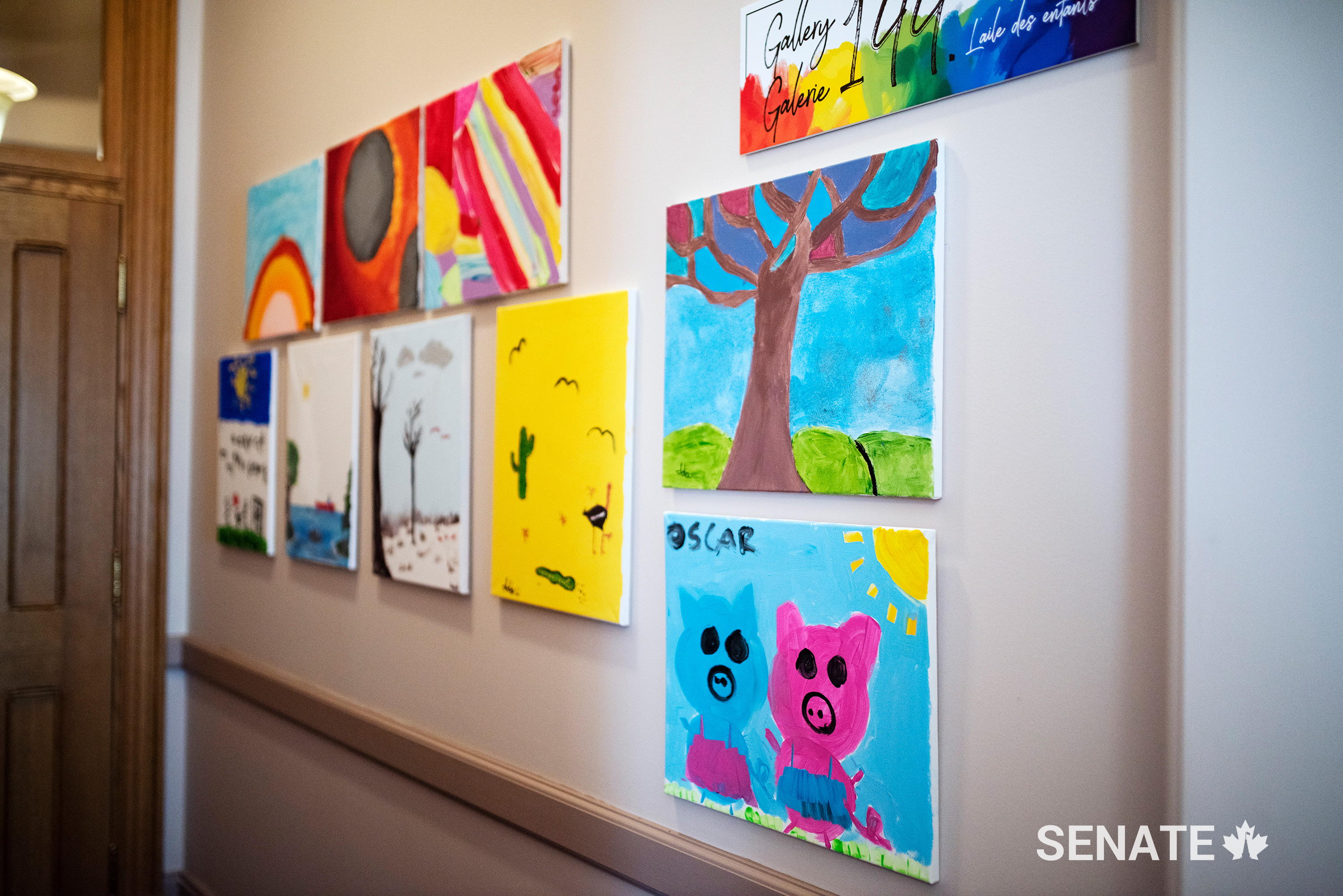
Tell me something about yourself that Canadians might not know about you.
I played tenor pan in a steel band for a few years when I was in my 50s and early 60s. The largest group had about 22 members ranging in age from eight to 82. While we could read music, I can tell you we did not have the innate rhythm, which was critically important.
What do you think are some of the most pressing social public policy issues facing Canadians today?
The key issues facing humanity are those of justice and equality, access to social and education
programs and issues of poverty. Another truly important issue is striking the right balance between environmental preservation and the needs of industry, balancing the economy of Canada and the planet’s health for future generations.
For me, if everyone had a guaranteed minimum income, they would be able to make decisions for their own lives — exactly what was proven in Dauphin, Manitoba’s 1970s Mincome experiment. People used fewer medications, they ate better and high school graduation rates increased dramatically. When people are in control of their own finances on a consistent basis, as the Dauphin Mincome experiment showed, it is cost effective for the community, and results in a healthier, better educated and more open society.
Do you feel that, as a senator, you’re able to stand up for the arts in Canada?
Do I stand up for arts and artists? Yes. Do I speak to arts groups? Absolutely. I’ve spoken from coast to coast and will be speaking in Cape Dorset in September 2019. But that’s only part of my goal. I am also trying to create an awareness of the real importance of the arts and culture in every aspect of Canadian society, the economy, health, education, the environment, employment — indeed every facet of our regions and nation. Arts and culture are also key to Canada’s international profile. During my time as a senator, I want to increase that awareness and understanding.
Why do you think more Canadians should pay attention to what goes on in the Senate?
I believe the Senate is a very important institution and has been for its 150-plus year history. It is the arm of government that reflects on, digests and dissects legislation. In sending legislation back to the House of Commons, improved with amendments, senators fulfill their legislative job. Our second role is investigative, and Senate committee reports are substantive on the many issues facing Canadians. Our third responsibility is to represent our regions, and mine, Manitoba, is unique in so many ways. It is an honour to bring concerns and accomplishments of Manitobans to the fore.
These three responsibilities are interconnected. I was really pleased that many of the witnesses who appeared at the hearings for the cultural diplomacy report of the Senate Committee on Foreign Affairs and International Trade, for instance, were appearing before a parliamentary committee for the first time. It is important to open the doors to hear from as many Canadians as possible, and committee hearings are a meaningful and powerful way to give Canadians their voice, tying our regional, investigative and legislative roles together.
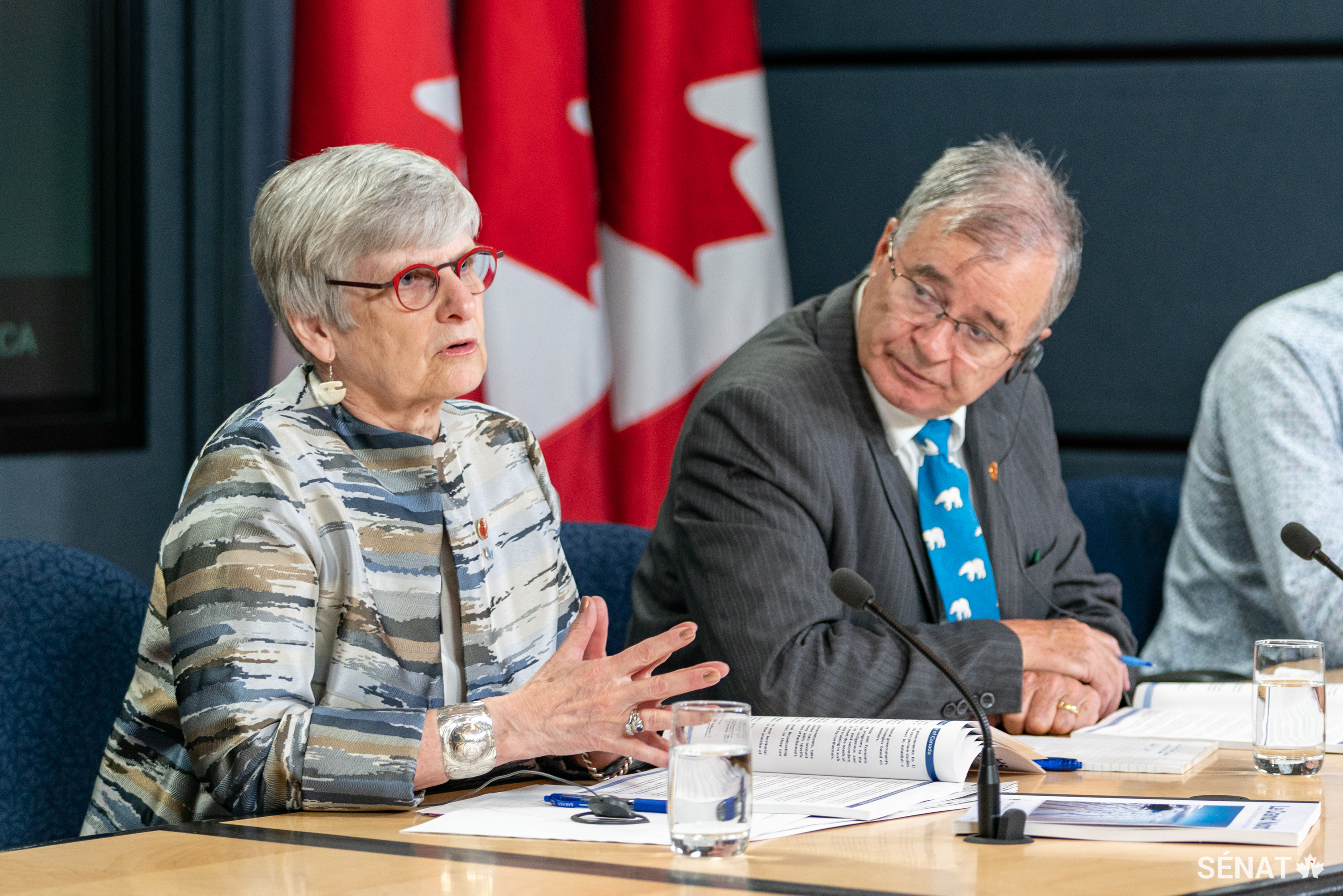
Are there other reports that have come out or other committee work that you are proud of?
I’m particularly proud of three reports I’ve been involved in: the Special Senate Committee on the Arctic report called Northern Lights: A Wake-up Call for the Future of Canada; the Foreign Affairs and International Trade Committee’s report called Cultural Diplomacy: At the Front Stage of Canada’s Foreign Policy; and the Transport and Communications Committee report Driving Change: Technology and the Future of the Automated Vehicle.
The transport report was forward-looking, addressing the complex issues facing society with the realities of new technologies.
The cultural diplomacy report is important to Canada as culture is an essential arm of our profile abroad. Artists present so much about who we are as a nation, opening doors to understanding. If we want to have solid and positive international trade, our profile must be healthy. If we want to take a place in major global discussions, it’s much easier to do so if people know who we are.
I hope the Arctic report has a strong impact on Canada. We addressed many issues that affect the region and we also looked at the Arctic in a global context, including security and sovereignty issues. There are many intersecting concerns such as increasing mercury levels in the food chain resulting from the melting permafrost, the fact that many parts of the North are without easy access to broadband —affecting business, health and education —, and the massive effects of climate change. Northern Indigenous languages and culture are critical, too. The Arctic is the future of Canada. If that part of Canada isn’t healthy and doesn’t have access to programs, and isn’t empowered, I have to question where we’re going.
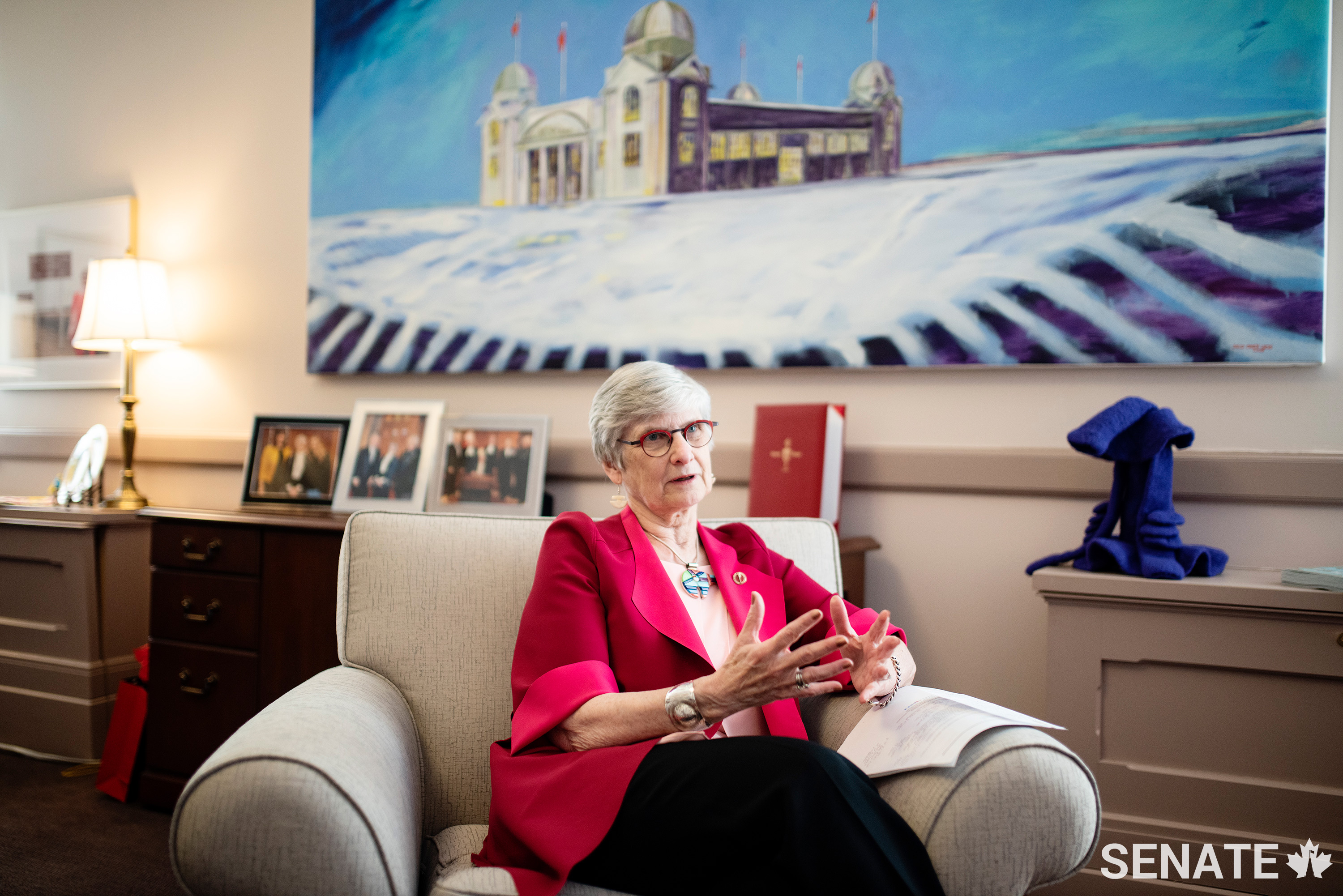
What is a hidden gem in your region that most Canadians should get to know?
Saint-Boniface in Winnipeg’s French Quarter has truly interesting cultural activities, including Le Musée de Saint-Boniface, Le Théâtre Cercle Molière, Le Centre Du Patrimoine, La Maison des artistes visuels francophones, and Le Festival du Voyageur, to name just a few. This vibrant francophone area of our community is a well-kept secret.
What’s a guilty pleasure song or album that always makes you smile and why?
You’re going to be surprised with what I’m going to say. One is Winnipeg’s own John K. Samson, who wrote the song “One Great City” with the refrain “I hate Winnipeg.” He has performed it worldwide, including in London’s Trafalgar Square where thousands of people sang along with him. He sings it everywhere he goes; he’s very popular in Britain, Germany, the U.S. and across Canada.
What sports, amateur or professional, do you support?
Being from Winnipeg, obviously, the Blue Bombers and the Jets. But the one I really support is my 11-year-old grandson’s soccer team in England, the Dulwich Village Football Club. Whenever I visit I’m on the sideline for practices and games.
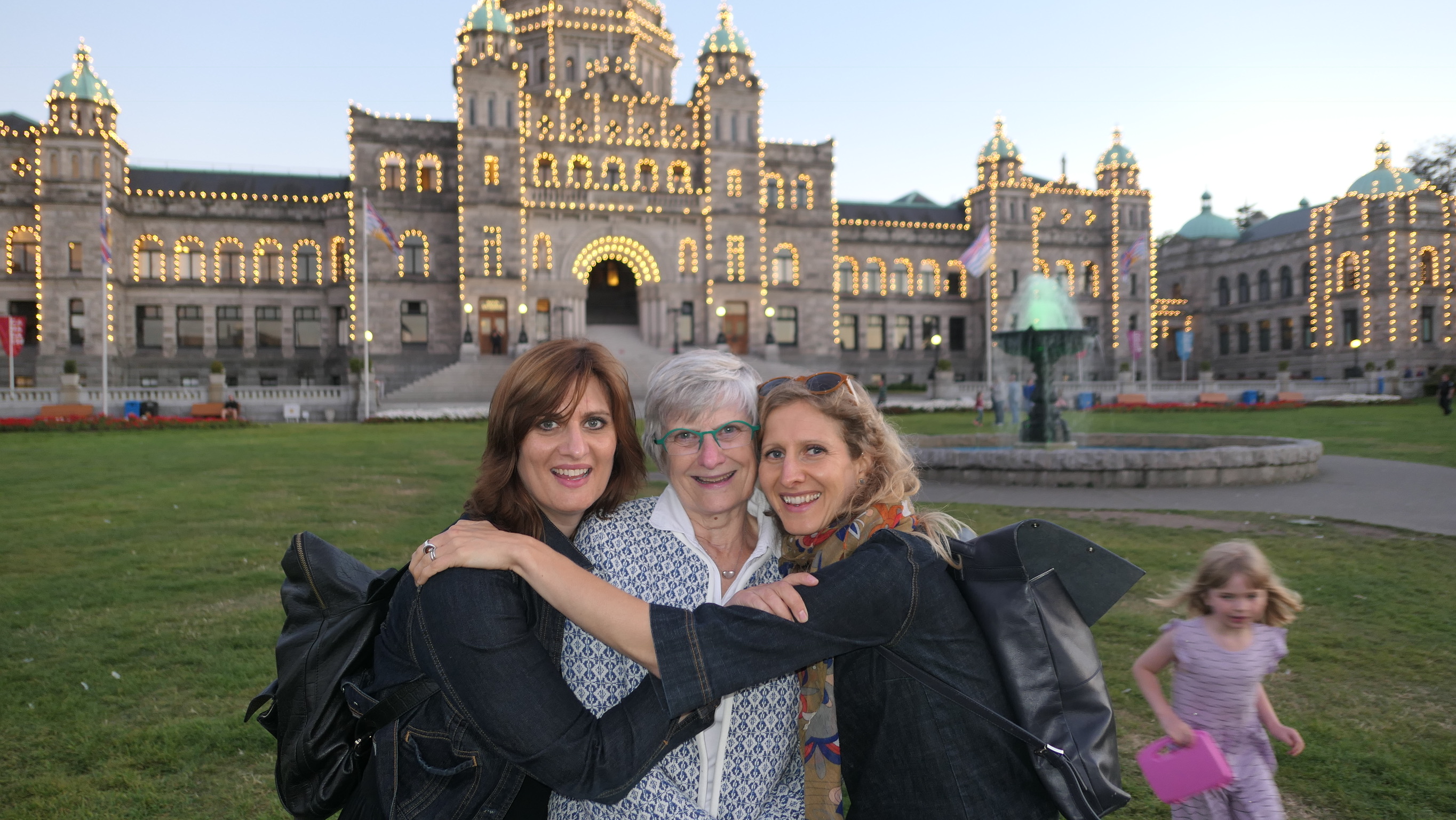 Senator Patricia Bovey with her daughters.
Senator Patricia Bovey with her daughters.
Why are you proud to be Canadian?
Canada is an amazing country filled with rich diversity. It’s that richness and diversity that give us our strength, our multi-dimensions. We’re a land with many different geographical areas, each stunning in its own way. The geography and the environment give spirit to Canadians, expressed by all the cultures, those who have lived here for thousands of years and those who have recently arrived.
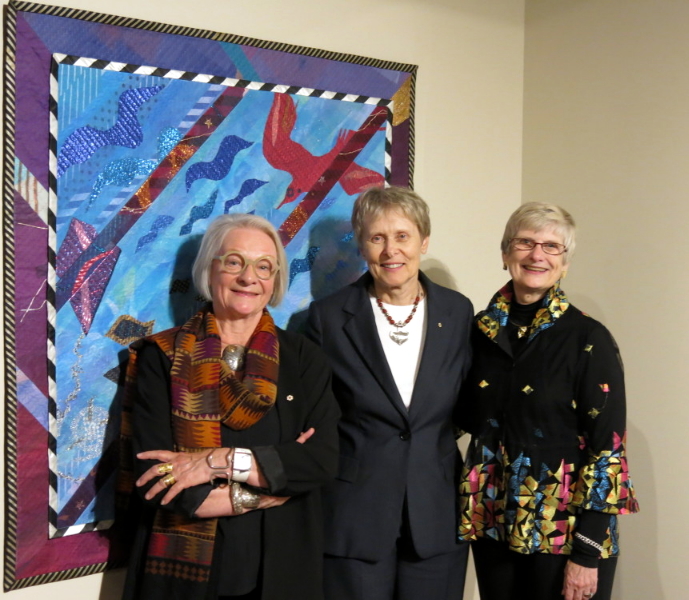 Senator Bovey with artist Carole Sabiston, left, and Roberta Bondar. Before she was appointed to the Senate, Senator Bovey was the founding director and curator of Buhler Gallery in Saint-Boniface, Winnipeg. One of the exhibitions she organized was “Dreams and Realities: Human Sensitivity of Place,” in collaboration with Ms. Sabiston and the Roberta Bondar Foundation. Photo credit: Bonnie Patterson/The Roberta Bondar Foundation
Senator Bovey with artist Carole Sabiston, left, and Roberta Bondar. Before she was appointed to the Senate, Senator Bovey was the founding director and curator of Buhler Gallery in Saint-Boniface, Winnipeg. One of the exhibitions she organized was “Dreams and Realities: Human Sensitivity of Place,” in collaboration with Ms. Sabiston and the Roberta Bondar Foundation. Photo credit: Bonnie Patterson/The Roberta Bondar Foundation
Note to readers: The Honourable Patricia Bovey retired from the Senate of Canada in May 2023. Learn more about her work in Parliament.
Related articles
Tags
Committee news
Meet Senator Patricia Bovey

Before being appointed to the Senate on November 10, 2016, Senator Patricia Bovey was a Winnipeg-based gallery director and curator, art historian, writer, professor and, for many years, a management consultant in the arts and not-for-profit sector.
She is currently deputy chair of the Senate Committee on the Arctic and is a member of the Senate Committee on Foreign Affairs and International Trade. A passionate defender and promoter of Canadian art, she brings an arts and culture lens to her work in the Red Chamber.
How did you first get involved in public life?
My parents were very involved in public life and strengthening one’s community. Being involved in one’s community was part of the mantra of our home. So, as children we volunteered and that involvement is just part of who I am and what I’ve done my whole life.
Before I came to the Senate, I worked in the visual arts as a curator and art museum director for many decades and I taught at several universities. I was adjunct professor in public administration and in art history and arts management. In the volunteer sector, among other commitments, I chaired two university boards — the board of Emily Carr University and that of the University of Manitoba.
As an art gallery director, my role was to present artists’ depictions of social issues and of the world around us both at home and abroad, and to do so from multiple viewpoints and to multiple audiences.
In the Senate, we also deal with contemporary issues affecting the world around us, again from multiple viewpoints and to multiple audiences.

Tell me something about yourself that Canadians might not know about you.
I played tenor pan in a steel band for a few years when I was in my 50s and early 60s. The largest group had about 22 members ranging in age from eight to 82. While we could read music, I can tell you we did not have the innate rhythm, which was critically important.
What do you think are some of the most pressing social public policy issues facing Canadians today?
The key issues facing humanity are those of justice and equality, access to social and education
programs and issues of poverty. Another truly important issue is striking the right balance between environmental preservation and the needs of industry, balancing the economy of Canada and the planet’s health for future generations.
For me, if everyone had a guaranteed minimum income, they would be able to make decisions for their own lives — exactly what was proven in Dauphin, Manitoba’s 1970s Mincome experiment. People used fewer medications, they ate better and high school graduation rates increased dramatically. When people are in control of their own finances on a consistent basis, as the Dauphin Mincome experiment showed, it is cost effective for the community, and results in a healthier, better educated and more open society.
Do you feel that, as a senator, you’re able to stand up for the arts in Canada?
Do I stand up for arts and artists? Yes. Do I speak to arts groups? Absolutely. I’ve spoken from coast to coast and will be speaking in Cape Dorset in September 2019. But that’s only part of my goal. I am also trying to create an awareness of the real importance of the arts and culture in every aspect of Canadian society, the economy, health, education, the environment, employment — indeed every facet of our regions and nation. Arts and culture are also key to Canada’s international profile. During my time as a senator, I want to increase that awareness and understanding.
Why do you think more Canadians should pay attention to what goes on in the Senate?
I believe the Senate is a very important institution and has been for its 150-plus year history. It is the arm of government that reflects on, digests and dissects legislation. In sending legislation back to the House of Commons, improved with amendments, senators fulfill their legislative job. Our second role is investigative, and Senate committee reports are substantive on the many issues facing Canadians. Our third responsibility is to represent our regions, and mine, Manitoba, is unique in so many ways. It is an honour to bring concerns and accomplishments of Manitobans to the fore.
These three responsibilities are interconnected. I was really pleased that many of the witnesses who appeared at the hearings for the cultural diplomacy report of the Senate Committee on Foreign Affairs and International Trade, for instance, were appearing before a parliamentary committee for the first time. It is important to open the doors to hear from as many Canadians as possible, and committee hearings are a meaningful and powerful way to give Canadians their voice, tying our regional, investigative and legislative roles together.

Are there other reports that have come out or other committee work that you are proud of?
I’m particularly proud of three reports I’ve been involved in: the Special Senate Committee on the Arctic report called Northern Lights: A Wake-up Call for the Future of Canada; the Foreign Affairs and International Trade Committee’s report called Cultural Diplomacy: At the Front Stage of Canada’s Foreign Policy; and the Transport and Communications Committee report Driving Change: Technology and the Future of the Automated Vehicle.
The transport report was forward-looking, addressing the complex issues facing society with the realities of new technologies.
The cultural diplomacy report is important to Canada as culture is an essential arm of our profile abroad. Artists present so much about who we are as a nation, opening doors to understanding. If we want to have solid and positive international trade, our profile must be healthy. If we want to take a place in major global discussions, it’s much easier to do so if people know who we are.
I hope the Arctic report has a strong impact on Canada. We addressed many issues that affect the region and we also looked at the Arctic in a global context, including security and sovereignty issues. There are many intersecting concerns such as increasing mercury levels in the food chain resulting from the melting permafrost, the fact that many parts of the North are without easy access to broadband —affecting business, health and education —, and the massive effects of climate change. Northern Indigenous languages and culture are critical, too. The Arctic is the future of Canada. If that part of Canada isn’t healthy and doesn’t have access to programs, and isn’t empowered, I have to question where we’re going.

What is a hidden gem in your region that most Canadians should get to know?
Saint-Boniface in Winnipeg’s French Quarter has truly interesting cultural activities, including Le Musée de Saint-Boniface, Le Théâtre Cercle Molière, Le Centre Du Patrimoine, La Maison des artistes visuels francophones, and Le Festival du Voyageur, to name just a few. This vibrant francophone area of our community is a well-kept secret.
What’s a guilty pleasure song or album that always makes you smile and why?
You’re going to be surprised with what I’m going to say. One is Winnipeg’s own John K. Samson, who wrote the song “One Great City” with the refrain “I hate Winnipeg.” He has performed it worldwide, including in London’s Trafalgar Square where thousands of people sang along with him. He sings it everywhere he goes; he’s very popular in Britain, Germany, the U.S. and across Canada.
What sports, amateur or professional, do you support?
Being from Winnipeg, obviously, the Blue Bombers and the Jets. But the one I really support is my 11-year-old grandson’s soccer team in England, the Dulwich Village Football Club. Whenever I visit I’m on the sideline for practices and games.
 Senator Patricia Bovey with her daughters.
Senator Patricia Bovey with her daughters.
Why are you proud to be Canadian?
Canada is an amazing country filled with rich diversity. It’s that richness and diversity that give us our strength, our multi-dimensions. We’re a land with many different geographical areas, each stunning in its own way. The geography and the environment give spirit to Canadians, expressed by all the cultures, those who have lived here for thousands of years and those who have recently arrived.
 Senator Bovey with artist Carole Sabiston, left, and Roberta Bondar. Before she was appointed to the Senate, Senator Bovey was the founding director and curator of Buhler Gallery in Saint-Boniface, Winnipeg. One of the exhibitions she organized was “Dreams and Realities: Human Sensitivity of Place,” in collaboration with Ms. Sabiston and the Roberta Bondar Foundation. Photo credit: Bonnie Patterson/The Roberta Bondar Foundation
Senator Bovey with artist Carole Sabiston, left, and Roberta Bondar. Before she was appointed to the Senate, Senator Bovey was the founding director and curator of Buhler Gallery in Saint-Boniface, Winnipeg. One of the exhibitions she organized was “Dreams and Realities: Human Sensitivity of Place,” in collaboration with Ms. Sabiston and the Roberta Bondar Foundation. Photo credit: Bonnie Patterson/The Roberta Bondar Foundation
Note to readers: The Honourable Patricia Bovey retired from the Senate of Canada in May 2023. Learn more about her work in Parliament.


